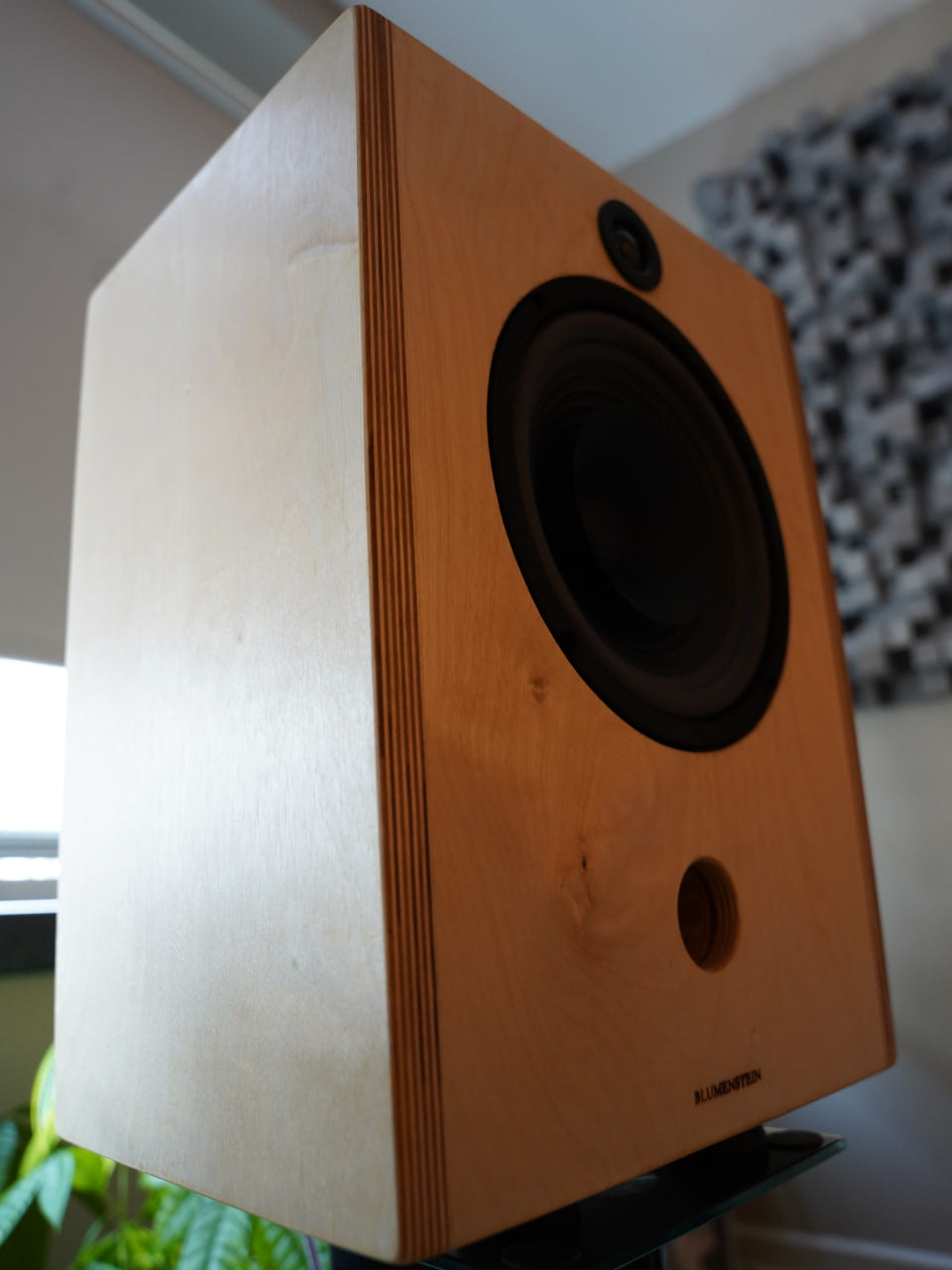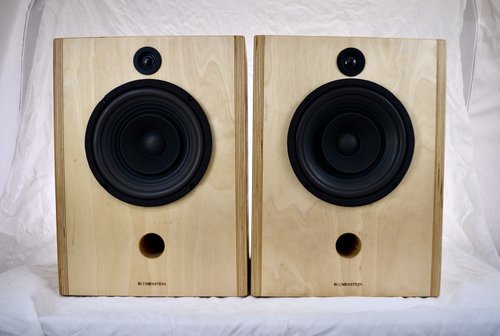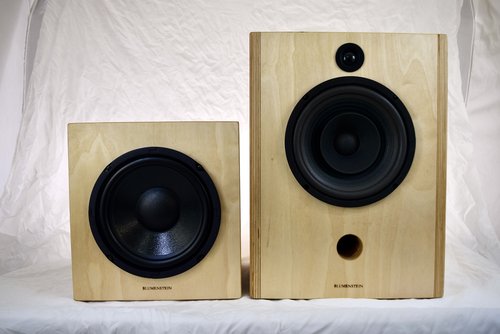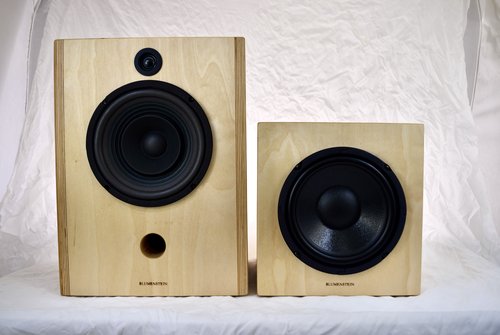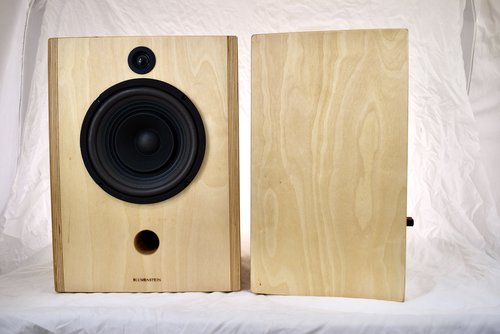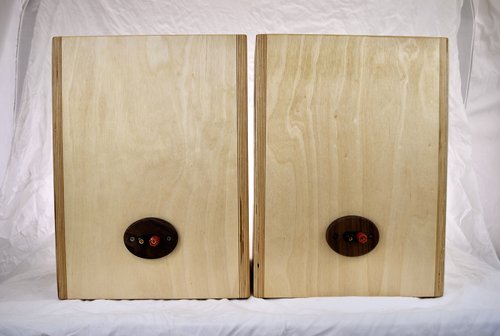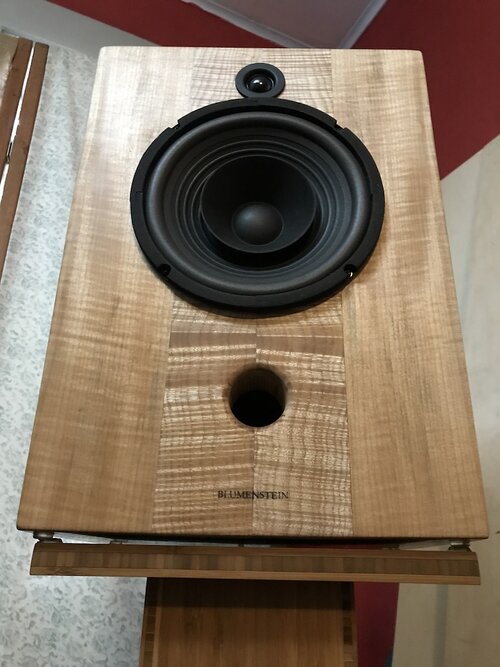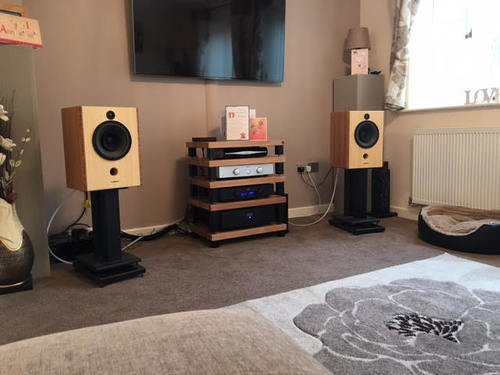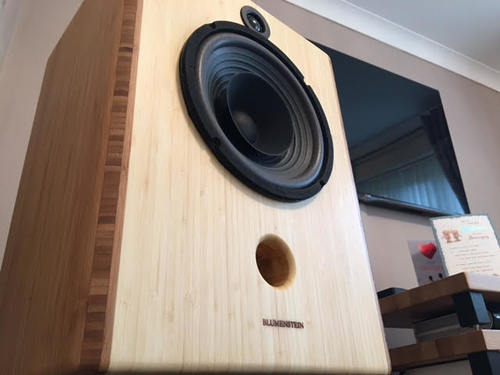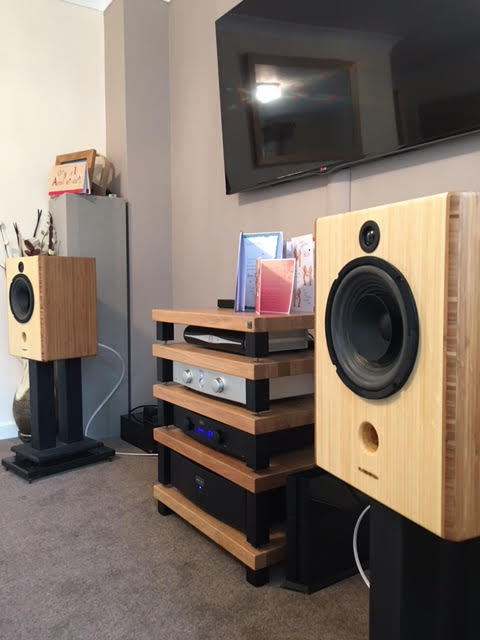I had the pleasure to be introduced into the wonderful world of Clark via a shared friend. They say you should separate the art from the artist but here it’s easier to see the full picture when considering both. Even during our initial phone call, it was easy to tell the passion that goes into each and every speaker he makes. You could tell that he was okay with breaking a few rules that some audiophiles hold near and dear all in the name of providing what he thought offered the best sound quality. Fully realized at the time with his infrasonic subwoofer using a famous car audio driver. While those in the audiophile circle might snub their noses at car audio and vice versa, I believed him when he said the results speak for themselves. What really seems to be his focus is on the cabinets themselves. I was told he studied for some time under the people at Feastrex in Japan learning to build cabinets before applying them to his own projects. The secondary part of his vision was to be able to position high end audio in more common spaces. He’s actively working to bring up the level of performance at things like live parties and DJ’d events with his offerings. I think this is best seen in some of his more eccentric offerings like the Octopus PA system, but even so in the Triton. Something that can be set up in a variety of spaces and sound good just about wherever. Not to mention high power handling capacity allowing them to be driven well enough to handle an audience while still sounding exceptional.

I opted for the “modest” birch plywood, which turned out to be anything but. The gorgeous cabinetry with every seam flawless is something to behold. Even for something like birch plywood, Clark has turned the look into something much more elegant and refined than one would initially expect. A kind knock on any side of the cabinet can show you how well they are braced. Compared to some of his other models that rely on single full range drivers, the Tritons are a two-way design in a sense. A full range paper dual (whizzer) cone covers 50 – 10k and a soft dome super tweeter with only a solen capacitor in terms of a “crossover.” Setting them up in my usual listening space was quite a breeze to get them dialed in just right. While they sound quite good at any angle it is worth spending some time to get things dialed in just right. You will be rewarded for it.

I should also mention at this point that I also used his Chameleon Subwoofer during this review. The fit and finish of these really match the Tritons well. They feature the same seamless edges and wooden backed binding posts as the Tritons. At the time, they were offered as passive and paired with a digital amp with crossover adjustments. I played with it a bit but found it complemented best when set to just above the 50 hz point of the Tritons.
My time with these speakers has shown me how important proper cabinetry is and has been quite rewarding. The drivers used are nothing bespoke and are not hand assembled by Clark. Instead, you can hear how even using these drivers he’s able to wring every last drop out of them. These have just been genuinely enjoyable to listen to. At 8 ohms and 95 dB sensitivity, these are incredibly amplifier friendly. To quote his own site “sounds great with 1 watt per channel SET amplifiers or high power (100+ WPC) solid state or digital amplifiers.” Much of this I have found to be true with different amplifiers being able to express different qualities within them.
I usually find myself drawn to high efficiency speakers. Not necessarily because I think they possess better sound solely due to their efficiency but because they tend to pair well with my favorite amps. Paired with my ampsandsound Black Pearl with a modest output of 8 w with anything but modest sound, these speakers really came to life. The Tritons seem to really be mid-range focused and the 300b’s brought that out in spades. There is a certain richness to the way vocals are presented. One thing this pair consistently showed was how much these speakers could fill a room. The sound was expansive and lush with an ever-present focus on the midrange. Slight edges to detail could be lost to present things in this way but at no point was I upset by that. If I closed my eyes, there was a disconnect between the massive sound I was hearing and the speaker’s relatively diminutive size. Vocal reproduction was really enjoyable. While it may not be as accurate as some other speakers on the market it presents incredibly romantic sounding vocals. Paired with the Black Pearl made for a really enjoyable experience. The top end was well extended and filled out the full range drivers nicely. There was enough top end energy that the pair never sounded overly warm and had great detail. I tended to prefer this pairing for more vocal centric music or jazz. While electronic music still sounded great, I think it would be better served by a solid-state amp.
Moving towards solid state using a First Watt F8, you could hear things really became a lot more focused with a great drive on the low end. It traded a bit of that lush room filling sound of the 300bs for a cleaner, resolving sound. I think the biggest difference here was in the low end. Even without the sub, the low end really came out in force and was presented a bit tighter than on the Black Pearl. If lush isn’t quite your thing, using this amp leaned out the mid-range a touch compared to the Black Pearl. For a driver that already presents with a creamy mid-range this might be towards people’s preference. Overall, the presentation was much more energetic and present. The top end was a bit better extended with nice detail that didn’t feel overly forced. When combined with the Chameleon sub, the low end was fast and electric. The Tritons themselves extend quite deep and do well at it, but adding the sub to the mix really fills them out. The Chameleon paired well as they both kept up quite well on faster tracks providing clean, punchy bass.
When positioned with a bit of care, the Tritons presented a very continuous field of sound. Localization of instruments was good. Not top of the class but that’s not really the presentation these seem to be after. I could pick out instruments place quite well, but they were just a touch diffuse in placement. Overall, the spatial presentation was wide and expensive but a bit soft. I enjoyed it but it might not be to some people’s preference.
While there are quite a few offerings on the market in this price range that may offer a bit more of a true audiophile sound, these seem to occupy a unique space. Their price tag is decidedly worth their performance but not on a typical metric. What the Tritons do is pull you into the music and don’t let you go. They offer room filling, joyous, lush sound. They’re incredibly easy to get into due to an easy set up and amplifier friendly nature. Even though they don’t fit into the traditional space they would be a perfect fit for anyone looking for something with a bit more character at this price point.

